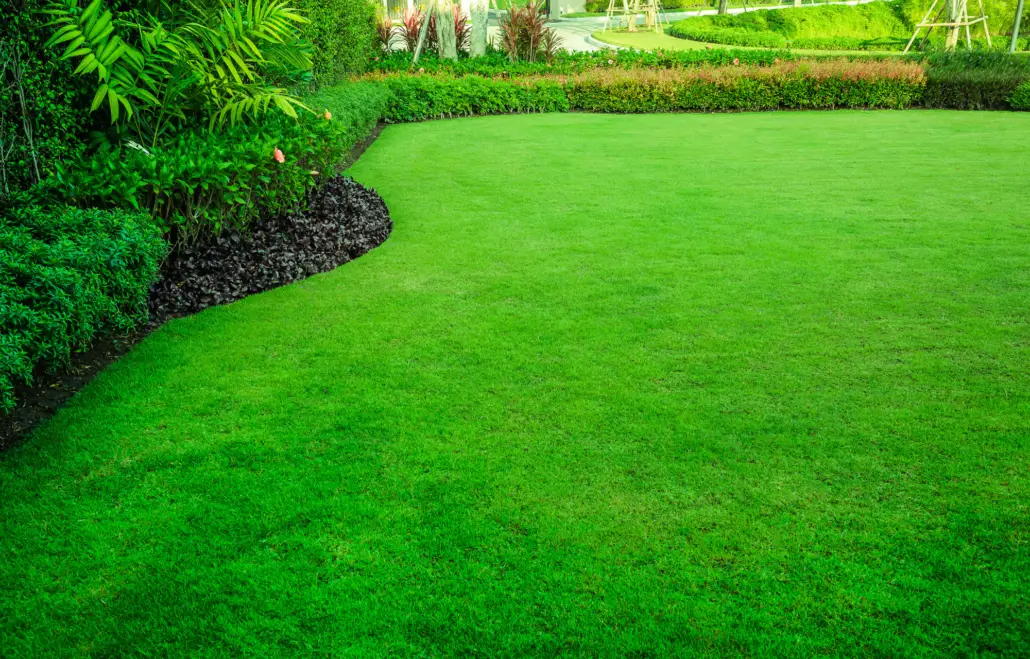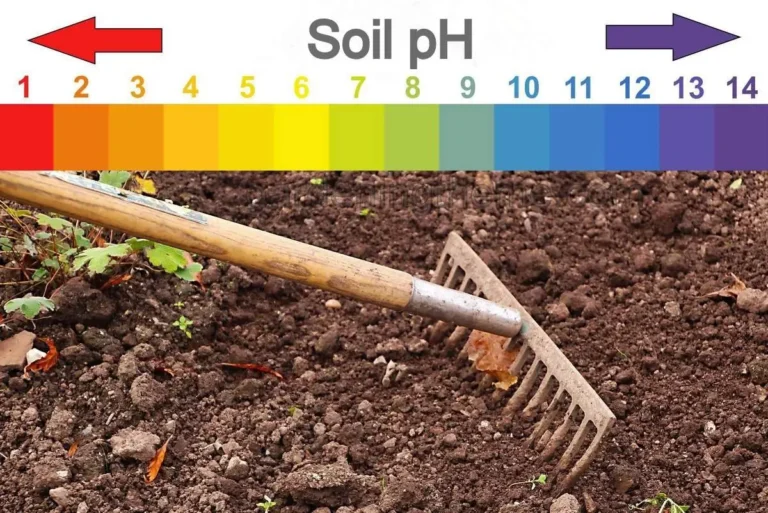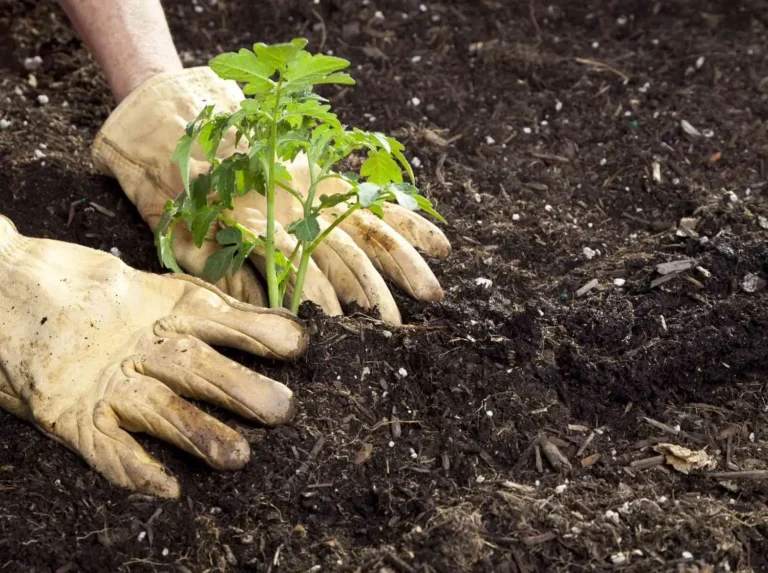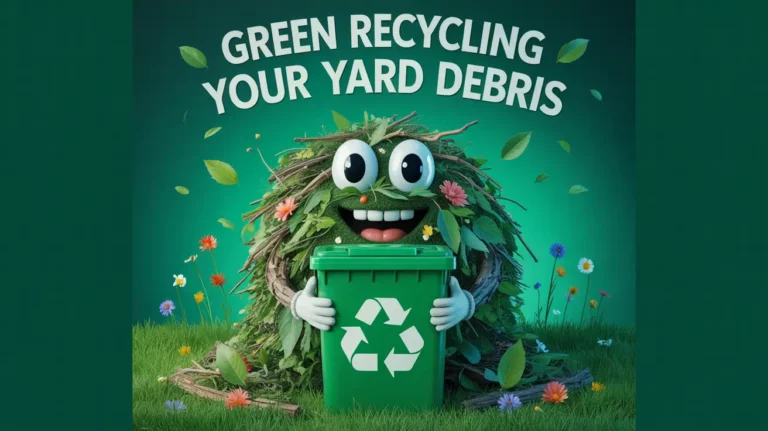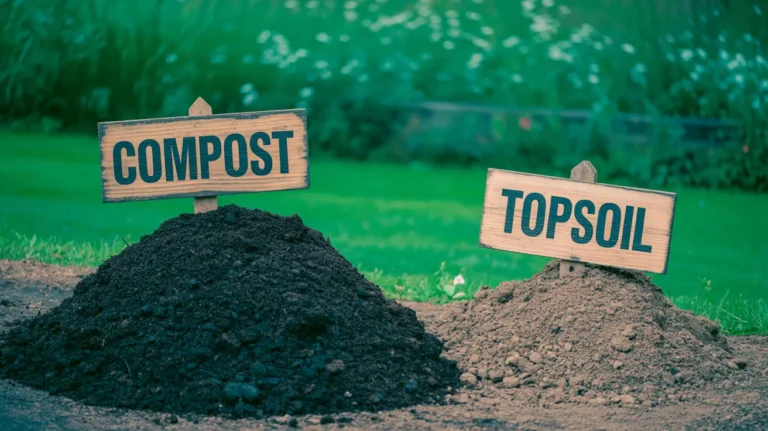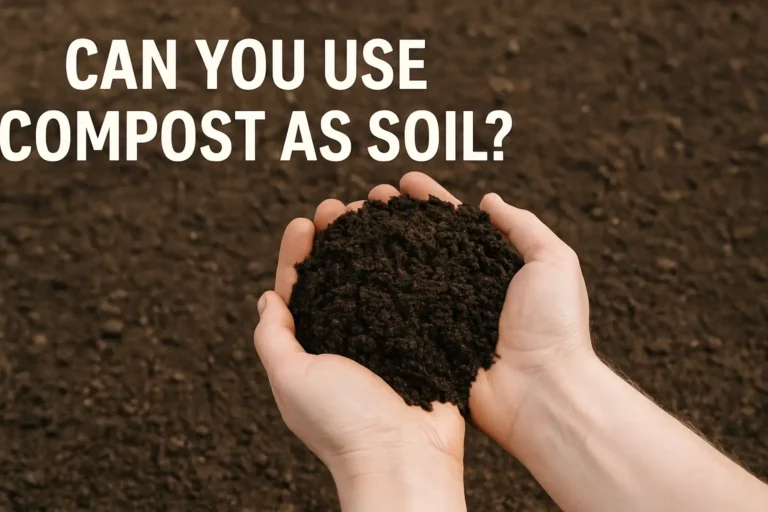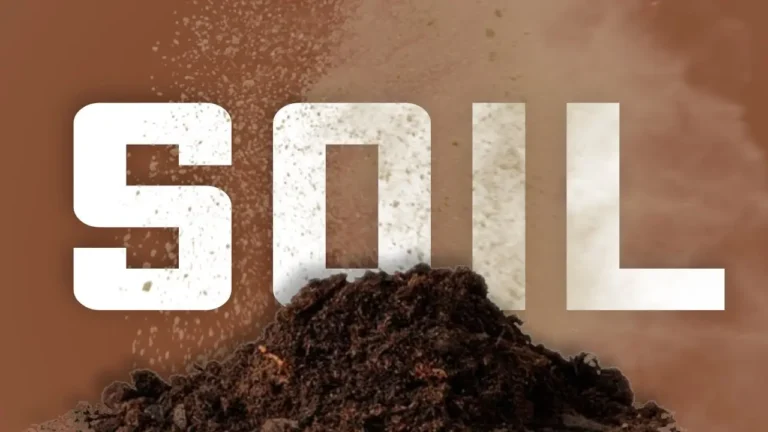Why Every Healthy Lawn Needs Good Soil: The Complete 2025 Guide to Building Your Perfect Foundation
When homeowners dream of a lush, green lawn that becomes the envy of the neighborhood, they often focus on the visible elements—fertilizers, watering schedules, and mowing patterns. However, the secret to achieving that coveted emerald carpet lies beneath the surface, in something far more fundamental: healthy soil.
The truth that many overlook is simple yet profound: your lawn is only as healthy as the soil beneath it. No amount of premium grass seed, expensive fertilizers, or meticulous maintenance can compensate for poor soil quality. Understanding this principle—and taking action to improve your soil—represents the difference between a struggling lawn that constantly demands attention and a thriving ecosystem that practically maintains itself.
The Foundation of Lawn Excellence: Understanding Soil Health
What Makes Soil “Healthy” for Your Lawn?
Healthy lawn soil is a living, breathing ecosystem that provides the perfect environment for grass roots to flourish. Unlike the sterile growing mediums you might find in potting mixes, healthy lawn soil teems with beneficial microorganisms, earthworms, and organic matter that work together to create an optimal growing environment.
The key characteristics of healthy lawn soil include:
- Proper pH balance (6.2 to 7.0 for most grass types)
- Adequate organic matter content (3-6% by weight)
- Good drainage while retaining moisture
- Sufficient nutrient content and availability
- Proper soil structure and aeration
Think of healthy soil as a sophisticated support system. Just as a skyscraper needs a solid foundation to reach impressive heights, your grass needs quality soil to develop the deep, robust root system that creates lasting beauty and resilience.
The Science Behind Soil and Grass Growth
Modern turf science has revealed fascinating insights about how soil directly impacts every aspect of grass health. When soil conditions are optimal, grass plants can:
Develop stronger root systems that penetrate deeper into the earth, accessing water and nutrients that shallow-rooted grass in poor soil simply cannot reach. These deep roots provide natural drought resistance and reduce the need for frequent watering.
Efficiently absorb nutrients through improved cation exchange capacity—essentially, the soil’s ability to hold and release nutrients when plants need them. Poor soil often locks away nutrients, making them unavailable even when fertilizers are applied.
Resist environmental stresses including heat, cold, and disease pressure. Healthy soil creates a buffer zone that moderates temperature fluctuations and provides the energy reserves grass needs to recover from stress.
The Three Pillars of Healthy Lawn Soil
Pillar 1: Soil Structure and Composition
The physical structure of your soil determines how well it can support grass growth. The ideal lawn soil—known as loamy soil—contains approximately equal parts sand, silt, and clay, creating a texture that balances drainage with water retention.
Understanding Your Soil Type:
Sandy Soil drains quickly but struggles to retain nutrients and moisture. While this prevents waterlogging, it often requires more frequent watering and fertilization. If you have sandy soil, you’ll notice water penetrates quickly but may see brown patches during dry spells.
Clay Soil holds nutrients well but can become compacted and poorly drained. This soil type often creates problems with waterlogging after heavy rains and can become hard and crusty when dry, making it difficult for grass roots to penetrate.
Loamy Soil represents the gold standard for lawn care. This balanced soil type drains well without drying out completely, maintains good aeration, and provides excellent nutrient retention. Most importantly, it’s easy for grass roots to penetrate and establish.
The Critical Role of Organic Matter
Organic matter serves as the engine that drives soil health. When present in adequate amounts (3-6% by weight), organic matter:
- Improves soil structure by binding particles together
- Increases water-holding capacity in sandy soils
- Enhances drainage in clay soils
- Provides slow-release nutrients as it decomposes
- Supports beneficial soil microorganisms
Pro Tip: You can significantly improve any soil type by gradually increasing organic matter content through regular applications of compost, aged manure, or other organic amendments.
Pillar 2: Chemical Balance and pH
Soil pH might seem like a technical detail, but it’s actually one of the most critical factors determining whether your lawn thrives or merely survives. The pH scale measures how acidic or alkaline your soil is, and this measurement directly impacts your grass’s ability to absorb nutrients.
The pH Sweet Spot for Lawns
Most turfgrass species perform best in slightly acidic to neutral soil, with a pH range of 6.2 to 7.0. Within this range:
- Nutrients remain readily available to grass roots
- Beneficial soil microorganisms thrive
- Harmful aluminum and manganese don’t reach toxic levels
- Organic matter decomposes at an optimal rate
When pH Goes Wrong
Acidic Soil (pH below 6.0) can lock up essential nutrients like phosphorus and potassium while making potentially harmful elements like aluminum more available. You might notice poor grass color, slow growth, and increased susceptibility to disease.
Alkaline Soil (pH above 7.5) often makes iron, manganese, and other micronutrients unavailable, leading to yellowing grass and poor growth despite adequate fertilization.
Essential Nutrients Your Soil Must Provide
Beyond pH, healthy soil must contain adequate levels of both macronutrients and micronutrients:
Primary Macronutrients (N-P-K):
- Nitrogen promotes vigorous growth and deep green color
- Phosphorus supports root development and establishment
- Potassium enhances disease resistance and stress tolerance
Secondary Nutrients:
- Calcium improves soil structure and root growth
- Magnesium is essential for chlorophyll production
- Sulfur aids in protein synthesis and color development
Understanding your soil’s pH adjustment needs can dramatically improve nutrient availability and overall lawn health.
Pillar 3: Biological Activity and Life
Healthy soil is alive with beneficial organisms that create a thriving ecosystem beneath your lawn. This biological component often gets overlooked, but it’s essential for long-term soil health and grass vitality.
The Underground Ecosystem
A single teaspoon of healthy soil contains billions of bacteria, millions of fungi, thousands of protozoa, and hundreds of nematodes. These organisms:
- Break down organic matter, releasing nutrients slowly over time
- Form beneficial relationships with grass roots
- Compete with harmful pathogens for resources
- Improve soil structure through their life processes
- Help plants resist drought and disease stress
Signs of Biological Health
You can assess your soil’s biological health by looking for:
- Earthworms (their presence indicates good organic matter and pH)
- Dark, earthy smell (not sour or chemical odors)
- Crumbly texture that holds together when squeezed
- Good water infiltration without rapid drying
- Healthy grass growth with good color and density
Testing Your Soil: The Foundation of Smart Lawn Care
Professional vs. DIY Soil Testing
Before you can improve your soil, you need to understand its current condition. Soil testing removes the guesswork from lawn care and provides the precise information needed to make targeted improvements.
Professional Laboratory Testing offers the most comprehensive analysis, typically including:
- Precise pH measurement
- Detailed nutrient analysis (N-P-K plus secondary and micronutrients)
- Organic matter percentage
- Cation exchange capacity
- Soil texture analysis
- Specific recommendations for your grass type and region
DIY Testing Kits provide basic information about pH and major nutrients. While less detailed than lab tests, quality home test kits can give you enough information to make basic soil improvements.
For the most accurate results and specific recommendations, professional testing through your local Cooperative Extension office or a reputable soil lab provides the best value for serious lawn enthusiasts.
When and How to Test Your Soil
Timing Your Soil Test
The best time to test soil is in early spring or fall when you can still make amendments before the growing season. Avoid testing:
- Immediately after fertilizing
- When soil is very wet or very dry
- During extreme weather conditions
- Within 6 months of lime or sulfur applications
Proper Sampling Technique
Accurate soil testing requires representative samples:
- Remove surface debris including grass clippings and organic matter
- Take multiple samples from different areas of your lawn (8-10 spots for every 1,000 square feet)
- Sample to the proper depth (3-4 inches for established lawns)
- Mix samples thoroughly to create one representative sample
- Follow lab instructions for sample size and handling
Understanding different soil types for plants helps you interpret test results and make appropriate amendments.
Building Healthy Soil: Proven Strategies That Work
Organic Matter: The Ultimate Soil Amendment
Adding organic matter represents the single most effective strategy for improving any soil type. Unlike quick fixes that provide temporary benefits, organic matter creates lasting improvements that compound over time.
Best Organic Matter Sources for Lawns:
Compost ranks as the gold standard for soil improvement. Quality compost:
- Provides slow-release nutrients
- Improves soil structure immediately
- Introduces beneficial microorganisms
- Works well in any soil type
- Creates long-lasting improvements
Aged Manure from herbivorous animals (cow, horse, sheep) offers excellent nutrient content along with organic matter. Always use well-composted manure to avoid burning grass and introducing weeds.
Leaf Mold created from decomposed leaves provides excellent soil structure improvement with minimal nutrient content—perfect for maintaining established lawns without overstimulating growth.
Application Methods for Maximum Effectiveness
Top-dressing involves spreading a thin layer (¼ to ½ inch) of organic matter over your lawn. This method works best when combined with core aeration, allowing the organic matter to work into the soil profile.
Pre-establishment incorporation offers the most dramatic improvements. When starting a new lawn or renovating an existing one, working 2-4 inches of organic matter into the top 6-8 inches of soil creates ideal growing conditions.
Determining how much topsoil you need for new installations ensures you have adequate depth for healthy root development.
pH Correction: Balancing Your Soil Chemistry
Raising pH (Reducing Acidity)
When soil tests reveal pH below 6.0, lime application can restore optimal chemical balance. Different lime types offer varying benefits:
Calcitic Lime provides calcium and raises pH gradually over 6-12 months. This represents the most economical option for most situations.
Dolomitic Lime supplies both calcium and magnesium while raising pH. Choose this option when soil tests indicate magnesium deficiency.
Pelletized Lime offers easier application and faster results than powdered lime, though at higher cost.
Application timing matters: Apply lime in fall or early spring when you can water it in thoroughly. Never apply more than 50 pounds per 1,000 square feet in a single application.
Lowering pH (Reducing Alkalinity)
Alkaline soils (pH above 7.5) require different approaches:
Elemental Sulfur provides the most economical long-term solution, though results develop slowly over several months.
Iron Sulfate offers faster pH reduction while providing iron that alkaline soils often lock up.
Organic Matter naturally tends to lower pH over time while providing multiple other benefits.
Improving Soil Structure and Drainage
Core Aeration: Creating Space for Growth
Compacted soil prevents proper root development and restricts water and air movement. Core aeration removes small plugs of soil, creating channels that:
- Allow deeper root penetration
- Improve water infiltration
- Enhance air exchange in the root zone
- Reduce thatch buildup
- Create opportunities for organic matter incorporation
Optimal aeration timing: Early spring or fall when grass is actively growing but temperatures remain moderate.
Aeration frequency: Annual aeration benefits most lawns, while heavily trafficked or clay soils may require twice-yearly treatment.
Drainage Solutions for Problem Areas
Surface drainage addresses standing water through proper grading and surface modifications. Water should flow away from flat areas toward appropriate drainage points.
Subsurface drainage may require more intensive solutions like French drains or drain tile for severely compromised soils.
Soil amendments can improve internal drainage in clay soils through sand addition (only when done properly) or organic matter incorporation.
For specialized applications like raised beds, understanding the best soil for raised beds provides insights into creating optimal growing conditions.
Fertilization Strategy: Feeding Your Soil Ecosystem
Understanding the Difference: Feeding Plants vs. Feeding Soil
Traditional lawn care focuses on feeding grass plants directly through synthetic fertilizers. While this approach can produce quick results, it often ignores soil health and can actually degrade soil quality over time.
Soil-focused fertilization takes a different approach, emphasizing:
- Slow-release nutrient sources that feed soil microorganisms
- Organic materials that improve soil structure
- Balanced nutrition that supports long-term grass health
- Minimal environmental impact through reduced leaching and runoff
The Synthetic vs. Organic Fertilizer Debate
Synthetic Fertilizers provide immediately available nutrients in concentrated forms. While they can produce rapid greening, they:
- Don’t improve soil structure or biological activity
- Can disrupt soil pH over time
- May reduce earthworm populations and beneficial microorganisms
- Require more frequent applications
- Increase susceptibility to drought and disease stress
Organic Fertilizers release nutrients slowly as soil microorganisms break them down. This approach:
- Feeds soil biology while nourishing grass
- Improves soil structure and water-holding capacity
- Provides more consistent, longer-lasting results
- Reduces environmental impact
- Creates greater drought and stress tolerance
Top Organic Fertilizer Options for Healthy Soil
Compost-based fertilizers combine the soil-building benefits of organic matter with balanced nutrition. These products typically provide 3-4% nitrogen along with phosphorus, potassium, and micronutrients.
Milorganite and similar biosolids offer slow-release nitrogen (6-8%) with significant iron content, making them excellent for maintaining consistent color and growth.
Alfalfa pellets provide nitrogen (5%) along with natural growth hormones that can stimulate root development and overall plant vigor.
Kelp meal supplies trace elements often missing from soil while providing natural plant growth regulators that enhance stress tolerance.
Timing Your Fertilization for Maximum Soil Health
Fall Fertilization: The Secret to Success
Research consistently shows that fall fertilization produces superior results compared to spring applications. Fall feeding:
- Supports root development when grass naturally focuses energy underground
- Provides nutrients for early spring green-up
- Reduces disease pressure compared to spring feeding
- Allows slow-release organic fertilizers time to become available
Application Schedule for Organic Programs
Early Fall (September): Apply primary fertilization using balanced organic fertilizer. This timing supports root growth and prepares grass for winter.
Late Fall (November): Optional second application using lower-nitrogen, higher-potassium fertilizer to enhance winter hardiness.
Spring (May): Light application of organic fertilizer to support early growth without overstimulating tender spring grass.
Summer: Avoid fertilization during heat stress periods unless using very gentle organic materials.
Understanding the differences between topsoil vs compost helps you choose the right materials for soil building and fertilization.
Advanced Soil Management Techniques
Microbial Inoculation: Supercharging Your Soil Biology
Modern soil science recognizes the critical role of beneficial microorganisms in plant health. Inoculating your soil with beneficial bacteria and fungi can dramatically improve grass performance.
Mycorrhizal Fungi form symbiotic relationships with grass roots, extending their effective reach and improving nutrient and water uptake. These beneficial fungi:
- Increase phosphorus availability by up to 1000%
- Enhance drought tolerance through improved water access
- Provide disease resistance through competitive exclusion
- Improve soil structure through hyphal networks
Beneficial Bacteria in the rhizosphere (root zone) provide multiple benefits:
- Fix atmospheric nitrogen, reducing fertilizer needs
- Produce natural growth hormones
- Suppress soil-borne diseases
- Improve nutrient cycling and availability
Commercial Microbial Products
Quality microbial inoculants contain diverse strains of beneficial organisms along with the nutrients they need to establish in your soil. Look for products that include:
- Multiple species of mycorrhizal fungi
- Beneficial bacteria strains
- Organic matter to feed soil biology
- Trace elements for microbial nutrition
Managing Soil Compaction: Creating Space for Life
Soil compaction represents one of the most common yet overlooked problems in lawn care. Compacted soil restricts root growth, reduces water infiltration, and creates anaerobic conditions that favor harmful microorganisms.
Identifying Compaction Problems
- Water puddles on the surface after rain or irrigation
- Grass struggles to establish or maintain density
- Hard, difficult-to-penetrate soil surface
- Poor response to fertilization and watering
- Increased weed pressure, especially from species that tolerate compaction
Comprehensive Compaction Solutions
Mechanical Aeration using core aerators removes soil plugs and creates immediate relief. For best results:
- Aerate when soil moisture is optimal (not too wet or dry)
- Make multiple passes in different directions
- Leave cores on the surface to decompose naturally
- Consider overseeding immediately after aeration
Biological Decompaction uses specific products containing bacteria and enzymes that help break up compacted soil layers naturally. These products work slowly but provide lasting improvements.
Traffic Management prevents future compaction through:
- Defined pathways for regular foot traffic
- Avoiding lawn use when soil is wet
- Distributing heavy equipment loads when necessary
- Installing permeable surfaces in high-traffic areas
Seasonal Soil Care Calendar
Spring (March-May)
- Conduct soil tests if not done in fall
- Apply lime or sulfur based on test results
- Begin organic matter additions through top-dressing
- Perform core aeration if needed (especially for cool-season grasses)
- Start light organic fertilization program
Summer (June-August)
- Focus on proper irrigation practices
- Avoid heavy foot traffic on stressed grass
- Monitor for pest and disease issues
- Apply compost tea or liquid organic fertilizers if needed
- Maintain proper mowing height to protect soil
Fall (September-November)
- Primary fertilization period for cool-season grasses
- Major aeration and overseeding projects
- Apply organic matter amendments
- Prepare soil for winter with potassium-rich fertilizers
- Begin planning next year’s soil improvement projects
Winter (December-February)
- Plan soil improvement projects for next year
- Research and order soil amendments
- Avoid traffic on frozen or snow-covered lawns
- Study soil test results and plan spring applications
- Prepare equipment for spring soil work
Common Soil Problems and Solutions
Dealing with Clay Soil Challenges
Clay soil presents unique challenges but can be transformed into excellent growing medium with patience and proper techniques.
Understanding Clay Soil Behavior
Clay particles are extremely small and tend to bind tightly together, creating several problems:
- Poor drainage leading to waterlogged conditions
- Difficulty for roots to penetrate when dry
- Tendency to become anaerobic (lacking oxygen)
- Slow nutrient release despite high nutrient content
- Susceptibility to compaction
Clay Soil Improvement Strategy
Never add sand alone to clay soil – this creates a concrete-like mixture that’s worse than pure clay. Instead:
Add organic matter gradually – Work 2-3 inches of compost into the top 6 inches of soil annually. This slowly improves drainage and structure.
Use gypsum applications – Calcium sulfate helps clay particles clump together, improving drainage without changing pH.
Install drainage systems – For severely problematic areas, French drains or other drainage solutions may be necessary.
Choose appropriate grass types – Tall fescue and some perennial ryegrass varieties tolerate clay better than Kentucky bluegrass.
Sandy Soil Solutions
Sandy soil drains quickly but requires different management strategies to maintain adequate moisture and nutrients.
Sandy Soil Characteristics
- Excellent drainage (sometimes too good)
- Low water-holding capacity
- Poor nutrient retention
- Easy root penetration
- Tendency toward acidity
Sandy Soil Management
Increase organic matter content – Sandy soils benefit enormously from organic matter additions, which improve water and nutrient retention.
Use slow-release fertilizers – Fast-release fertilizers wash through sandy soil quickly, wasting money and potentially polluting groundwater.
Irrigate more frequently with less water – Light, frequent watering prevents nutrient leaching while maintaining adequate soil moisture.
Choose drought-tolerant grass varieties – Tall fescue, buffalo grass, and some fine fescues perform well in sandy conditions.
Solving Drainage Problems
Poor drainage creates anaerobic soil conditions that favor harmful microorganisms while stressing grass roots.
Surface Drainage Solutions
- Grade lawn areas to eliminate low spots
- Install surface drains in problem areas
- Create swales to channel water away from flat areas
- Consider permeable hardscaping for high-traffic areas
Subsurface Drainage Options
- French drains for localized wet areas
- Drain tile systems for extensive drainage problems
- Dry wells for areas with impermeable subsoil
- Professional drainage system design for severe problems
The Economic Benefits of Healthy Soil
Long-term Cost Savings
Investing in soil health provides significant long-term economic benefits that often exceed the initial investment within 2-3 years.
Reduced Input Costs
- Healthy soil requires less fertilizer due to improved nutrient cycling
- Better water retention reduces irrigation needs
- Improved disease resistance reduces fungicide applications
- Enhanced stress tolerance reduces replacement costs
Increased Property Value
- Healthy, attractive lawns increase property values by 5-10%
- Quality landscaping provides one of the highest returns on home improvement investments
- Reduced maintenance requirements appeal to potential buyers
- Environmental benefits align with growing sustainability concerns
Time Savings
- Healthy soil creates more resilient grass that requires less intervention
- Reduced pest and disease problems minimize emergency treatments
- Better establishment success reduces reseeding and renovation needs
- Self-sustaining soil biology reduces the need for constant amendments
Calculating Your Investment
Initial Soil Improvement Costs (per 1,000 square feet)
- Professional soil test: $15-30
- Organic matter amendments: $25-50
- pH adjustment materials: $20-40
- Core aeration service: $75-125
- Total first-year investment: $135-245
Annual Maintenance Costs (ongoing)
- Organic fertilizers: $30-60
- Additional organic matter: $15-25
- Periodic pH adjustment: $10-20 (as needed)
- Total annual maintenance: $55-105
Cost Comparison with Conventional Programs
- Synthetic fertilizer programs: $80-150 annually
- Disease treatments: $50-100 annually
- Frequent overseeding: $25-50 annually
- Additional water costs: $100-200 annually
- Total conventional costs: $255-500 annually
The math clearly favors soil-focused lawn care, with healthy soil programs typically costing 50-75% less than conventional approaches while providing superior results.
Environmental Impact and Sustainability
Building Carbon in Your Soil
Healthy lawn soil acts as a significant carbon sink, helping mitigate climate change while improving grass performance.
How Soil Stores Carbon
- Organic matter in soil contains approximately 50% carbon
- Grass roots contribute carbon through root exudates and decomposition
- Soil microorganisms process carbon into stable soil organic matter
- Deep-rooted grasses in healthy soil store more carbon than shallow-rooted alternatives
Maximizing Carbon Storage
- Maintain grass cover year-round to maximize root carbon input
- Use organic fertilizers that feed soil microorganisms
- Avoid excessive tillage that releases stored carbon
- Keep organic matter levels high through regular additions
Water Quality Protection
Healthy soil provides natural filtration that protects water quality while reducing the need for chemical inputs.
Natural Filtration Benefits
- Organic matter binds with nutrients, preventing leaching
- Good soil structure promotes infiltration over runoff
- Beneficial microorganisms break down potential pollutants
- Dense grass coverage prevents soil erosion
Reducing Chemical Runoff
- Slow-release organic fertilizers minimize nutrient loss
- Healthy soil reduces the need for pesticide applications
- Improved grass health reduces fertilizer requirements
- Better water retention reduces irrigation runoff
Advanced Troubleshooting: When Soil Improvement Isn’t Enough
Identifying Underlying Problems
Sometimes, despite proper soil management, lawns continue to struggle. Advanced troubleshooting can identify hidden issues that prevent success.
Subsoil Problems
- Hardpan layers that restrict root growth
- Perched water tables from construction activity
- Contaminated soil from previous land use
- Extreme pH conditions in subsoil layers
Microbial Issues
- Disease pressure from soil-borne pathogens
- Lack of beneficial microorganisms
- Chemical residues that inhibit biological activity
- Imbalanced soil biology from overuse of synthetic inputs
Grass Selection Mismatch
- Wrong grass type for soil conditions
- Varieties not adapted to local climate
- Genetic weakness in current grass population
- Age-related decline in older lawn areas
Professional Intervention Options
Advanced Soil Testing
- Biological activity assessments
- Contamination screening
- Physical property analysis
- Microscopic examination for pathogens
Specialized Treatments
- Soil fumigation for severe pathogen problems
- Subsoil modification for drainage issues
- Microbial inoculation programs
- Custom organic matter programs
Complete Renovation
- Soil replacement in severely compromised areas
- Installation of drainage systems
- Regrading for proper surface drainage
- Establishment with appropriate grass varieties
Essential Tools and Products for Soil Health
Soil Testing Equipment
Professional-Grade pH Meters provide accurate, instant pH readings for ongoing monitoring. Digital meters with automatic temperature compensation offer the best accuracy.
Soil Thermometers help time applications and understand soil biology activity. Soil temperature governs microbial activity and nutrient availability.
Penetrometers measure soil compaction objectively, helping determine aeration needs and track improvement over time.
Application Equipment
Broadcast Spreaders ensure even distribution of granular amendments. Rotary spreaders work well for most materials, while drop spreaders provide precision for expensive products.
Core Aerators can be rented for DIY projects or hired through professional services. Walk-behind units work for smaller areas while tow-behind models handle larger lawns efficiently.
Compost Spreaders designed specifically for organic matter application provide even coverage without clumping.
Recommended Products
For pH Adjustment:
Espoma Organic Garden Lime – This pelletized limestone provides gentle, long-lasting pH correction while adding beneficial calcium. The pelletized form is easier to apply and works faster than powdered lime. Perfect for gradually raising pH in acidic soils while improving overall soil structure.
For Organic Matter:
Black Kow Composted Cow Manure – Aged and composted for immediate use, this organic matter improves soil structure while providing slow-release nutrients. The composting process eliminates weed seeds and reduces odor while maintaining beneficial properties.
For Soil Testing:
Sonkir 3-in-1 Soil Tester – Test pH, moisture, and light levels instantly without batteries. While not as precise as laboratory testing, this tool provides quick assessments for ongoing soil management.
For Aeration:
Yard Butler Lawn Coring Aerator – Manual aerator perfect for smaller areas or spot treatment. The foot bar design makes it easy to penetrate compacted soil and extract proper cores.
Seasonal Soil Management Calendar
Spring Soil Preparation (March-May)
Early Spring Tasks:
- Test soil pH and nutrient levels if not done in fall
- Apply lime or sulfur based on test results
- Begin core aeration program for compacted areas
- Start organic matter additions through light top-dressing
Mid-Spring Activities:
- Apply first organic fertilizer application
- Overseed thin areas after soil preparation
- Monitor soil temperature for optimal seeding conditions
- Begin regular soil moisture monitoring
Late Spring Maintenance:
- Evaluate spring soil improvements
- Adjust irrigation based on soil water-holding capacity
- Apply beneficial microorganism inoculants
- Plan summer soil management strategy
Summer Soil Care (June-August)
Heat Stress Management:
- Maintain adequate soil moisture without overwatering
- Avoid heavy foot traffic on stressed soil
- Apply compost tea for biological activity support
- Monitor for pest and disease issues in stressed areas
Maintenance Activities:
- Light organic fertilizer applications if needed
- Proper mowing height to protect soil surface
- Spot treatment of compacted high-traffic areas
- Planning fall soil improvement projects
Fall Soil Rehabilitation (September-November)
Early Fall (September):
- Major aeration and overseeding projects
- Primary organic fertilizer application
- Large-scale organic matter additions
- pH adjustment applications
Mid-Fall (October):
- Continue overseeding in cooler weather
- Apply winter protection fertilizers high in potassium
- Final organic matter applications before winter
- Prepare equipment for winter storage
Late Fall (November):
- Final fertilizer applications for winter hardiness
- Complete major soil amendment projects
- Plan next year’s soil improvement schedule
- Document this year’s results for future reference
Winter Soil Planning (December-February)
Planning Activities:
- Review soil test results and plan improvements
- Research new soil management techniques
- Order soil amendments for spring delivery
- Plan equipment maintenance and upgrades
Preparation Tasks:
- Avoid traffic on frozen or saturated soils
- Study successful soil management practices
- Develop budget for next year’s soil improvements
- Schedule professional consultations if needed
The Future of Lawn Soil Management
Emerging Technologies
Soil Sensors are becoming more affordable and accessible, allowing homeowners to monitor soil conditions in real-time. These devices track:
- Soil moisture at root zone depth
- Temperature fluctuations that affect biological activity
- pH changes over time
- Nutrient availability in solution
Microbial Analysis is moving from research laboratories to practical applications. Advanced testing can identify:
- Beneficial microorganism populations
- Pathogenic organism presence
- Biological diversity indices
- Specific functional groups of soil organisms
Precision Application Technology enables targeted treatment of soil problems, reducing waste and environmental impact while improving results.
Sustainable Practices on the Horizon
Biochar Applications show promise for long-term carbon storage and improved soil structure. This charcoal-like material can:
- Permanently improve soil organic matter
- Enhance nutrient retention capacity
- Provide habitat for beneficial microorganisms
- Store carbon for decades or centuries
Integrated Pest Management is evolving to focus more heavily on soil health as the foundation of plant resistance. Healthy soil reduces the need for chemical interventions while providing natural pest suppression.
Climate-Adapted Grass Varieties developed through advanced breeding programs require less water and nutrients while performing well in healthy soil conditions.
Conclusion: Your Path to Soil Success
Creating healthy soil for your lawn represents both an investment in your property and a contribution to environmental sustainability. The strategies outlined in this comprehensive guide provide a roadmap for transforming any soil into a thriving ecosystem that supports beautiful, resilient grass.
Remember these key principles:
- Soil health is the foundation of lawn success
- Organic matter improvement provides the greatest long-term benefits
- pH balance enables nutrient availability and biological activity
- Gradual, consistent improvements outperform quick fixes
- Biological activity creates self-sustaining soil health
Your next steps:
- Test your soil to understand current conditions
- Develop a multi-year improvement plan based on test results
- Begin with organic matter additions and pH correction
- Implement biological enhancement through beneficial microorganisms
- Monitor progress and adjust strategies based on results
The journey to perfect soil takes time, but the rewards—in terms of lawn beauty, reduced maintenance, cost savings, and environmental benefits—make the effort worthwhile. Start with small improvements and build momentum as you see results. Your future self will thank you for investing in the foundation that makes everything else possible.
Remember, every healthy lawn needs good soil, but with proper knowledge and consistent application of proven techniques, any homeowner can create the soil conditions that produce the lawn of their dreams. The time to start is now—your soil, your grass, and your property value are all waiting for you to unlock their full potential through the power of healthy soil.
For more specialized guidance on soil calculations and amendments, explore our related resources on soil pH adjustment, topsoil requirements, and choosing the right soil type for your specific lawn care goals.
